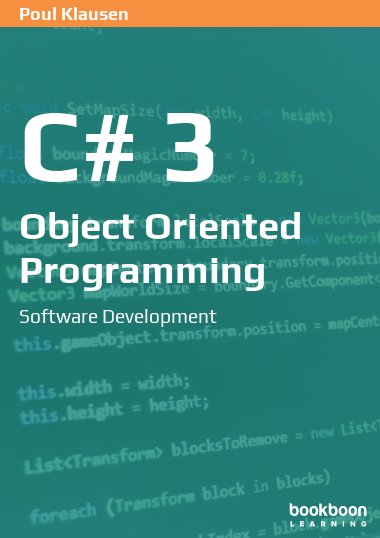The book deals with object-oriented programming in C# and how a running program consists of coop-erating objects and how these objects are defined and created on basis of the program's classes. The book has focus on classes and how classes are used as the basic building blocks for developing a pro-gram. It is assumed that the reader has a basic knowledge of C# corresponding to the books C# 1 and 2 in this series.
Click here to download the source files from this book.

